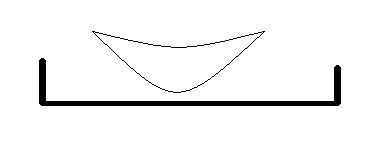Challenges in optics 2
 The convex surface of a thin concavo-convex lens of glass of refractive index 1.5 has a radius of curvature 20cm. The concave surface has radius of curvature 60cm. The convex side is silvered and placed on a horizontal surface. Where should a pin be placed on the optic axis such that its image is formed at the same place.
The convex surface of a thin concavo-convex lens of glass of refractive index 1.5 has a radius of curvature 20cm. The concave surface has radius of curvature 60cm. The convex side is silvered and placed on a horizontal surface. Where should a pin be placed on the optic axis such that its image is formed at the same place.
Use SI units.
The answer is 0.15.
This section requires Javascript.
You are seeing this because something didn't load right. We suggest you, (a) try
refreshing the page, (b) enabling javascript if it is disabled on your browser and,
finally, (c)
loading the
non-javascript version of this page
. We're sorry about the hassle.
The question becomes easy if we replace the combination by a single mirror depending on the nature converging or diverging.
In this case P e q = 2 P l e n s + P m i r r o r
where P denotes power ,
We know P m i r r o r = − f m i r r o r 1
Also we use lens makers formula.
f l e n s 1 = ( μ − 1 ) ( R 1 1 − R 2 1 )
P e q = 2 ( 1 . 5 − 1 ) ( − 6 0 1 − − 2 0 1 ) − − 1 0 1
P e q = − f e q 1 = 1 5 2
Thus we get f e q = − 2 1 5 thus we get a concave mirror whose focal length is 7 . 5 cm.
Thus for a concave mirror , the object should be at the radius of curvature to get the image at the same distance.
Hence the answer is 2 f = 1 5 c m = 0 . 1 5 m